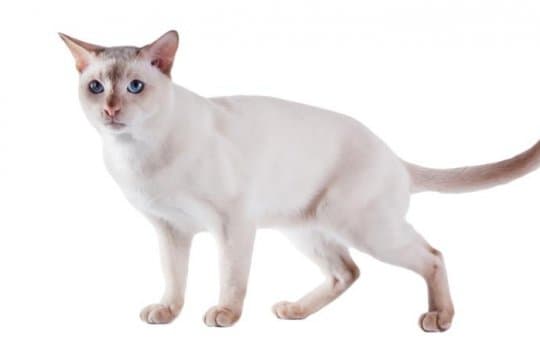
tonkinese
Loving, gregarious, playful, inquisitive
Overview
Origin
United States
Life Span
14-16 years
Height
8"- 10"
Weight
6-12 pounds
Group
Small to medium-sized short-haired
Price
$600 - $1000
History
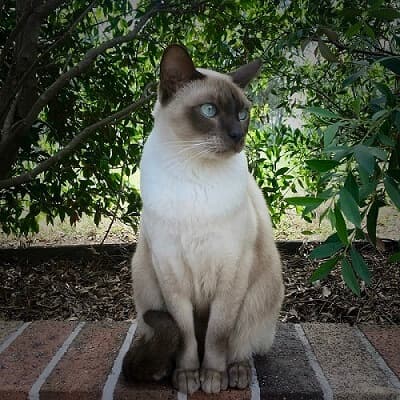
Even though the Tonkinese is a relatively modern cat breed, feline historians believe that Tonkinese have been with us since the early 20th century. In 1930, a cat named Wong Mau was imported to the United States. Even though she was supposedly a “Burmese type” cat, it’s likely that she was a Burmese – Siamese cross, which means that even though the Tonkinese cat breed had yet to be listed, she was in fact Tonkinese. As one of the breed’s matriarchs, Wong Mau is still found on many contemporary Tonkinese pedigrees.
We have two separate breeders to thank for the Tonkinese cats we know and love today. Jane Barletta, a US cat breeder, and Margaret Conroy, a cat breeder from Canada, set up separate Siamese / Burmese crossbreeding operations. Others soon followed suit and this captivating cat breed rapidly gained popularity.
The Tonkinese was introduced to competition in the 1980s. First granted official recognition in Canada, Tonkinese cats were given championship status by the Cat Fanciers Association (CFA) in 1984. Once the breed was firmly established outcrossing to Burmese and Siamese cats was discontinued.
Tonkinese cats are widely recognized by cat breed registries worldwide including The International Cat Association (TICA), the Australian Cat Federation (ACF), the Canadian Cat Association (CCA) and others.
Care
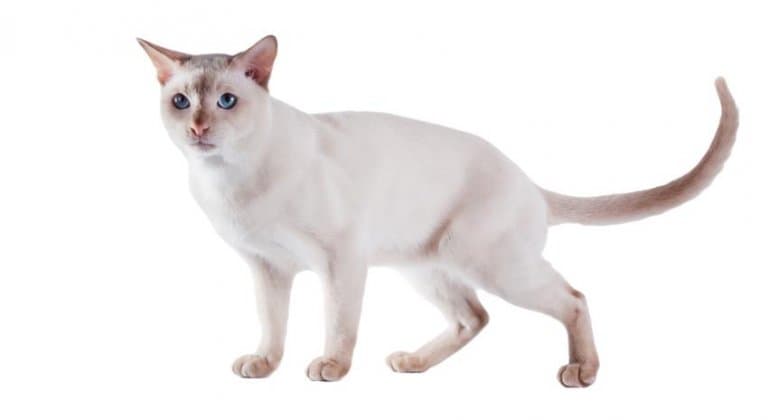
Nutrition
Tonkinese cats have no special nutritional needs, however they can be prone to obesity later in life, meaning quality food that’s high in protein and low in carbohydrates is ideal. Look for a brand that relies on real meat or fish instead of fillers.
Grooming
The Tonkinese cat has a very short, fairly low-shedding coat, and does not require much brushing. Do give them a quick once-over every few days; this will remove excess hair, cut back on shedding, and reduce the likelihood of hairballs.
Exercise
Tonkinese cats love to run, and they’re outstanding jumpers. Given the chance, they’ll happily climb whichever objects happen to be nearby, making a robust cat condo one of life’s essentials. Treat your cat to at least one scratching post and provide plenty of toys including those that let you get involved.
Health
Tonkinese cats have an outstanding reputation for enjoying great health. Some individuals are at risk of inflammatory bowel disease, feline lower urinary tract disease, and renal amyloidosis. None of these issues are prevalent, but your vet will want to watch for signs that they might be developing.
Breed Standard
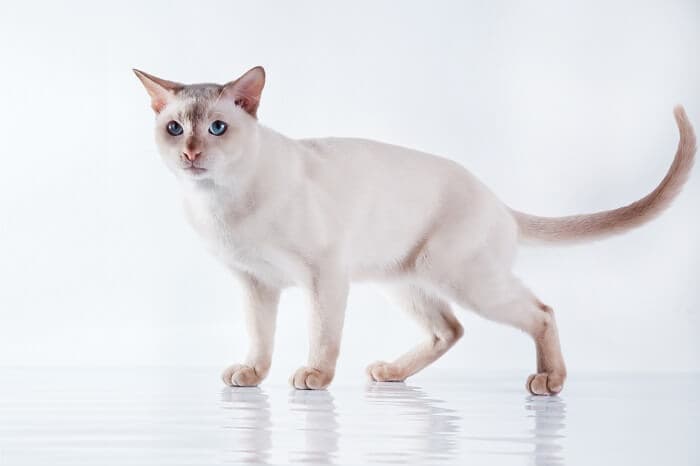
Body
The Tonkinese should have a medium torso with well-developed muscles and a firm abdomen. The overall impression should be one of a well-proportioned cat that is neither too long nor too cobby.
Head
The head is a modified, slightly rounded wedge that is longer than it is wide. The muzzle should be blunt, and as long as it is wide. A slight whisker break should continue the lines of the head. In profile, there should be a slight convex curve to the forehead.
Eyes
The eyes should be open almond shapes, and should slant along the line of the cheekbones toward the outer edges of the ears.
Ears
The Tonkinese cat should have alert, medium-sized ears with broad bases and oval tips. The ears should be set as much to the sides of the head as to the top.
Color
There are many Tonkinese cat colors, including natural solid and natural point, along with multiple point and mink colors. Champagne, blue, and platinum variations are popular, all with nose leather and paw pad colors that complement the coat.
Coat
The coat should be medium-short in length, with a soft, silky feel.
Tail
The Tonkinese cat’s tail should be well-proportioned, and should have a tapered but not whippy shape.
Legs & Paws
The legs should be slim and proportionate, with the hind legs being slightly longer than the forelegs. The paws should be well-proportioned ovals.
Personality & Temperament
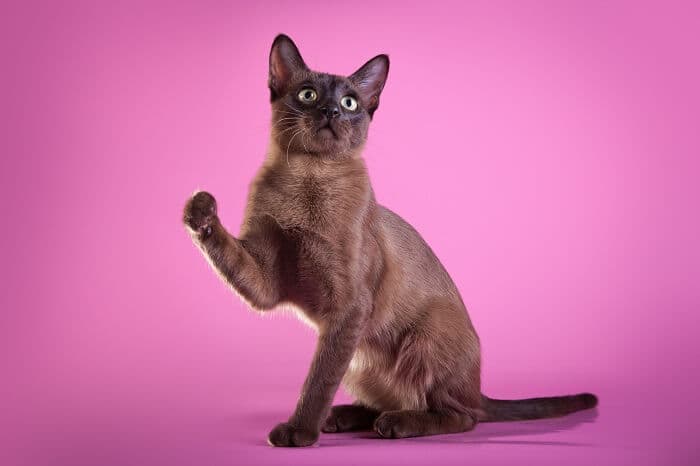
Can’t decide whether you prefer a Siamese or a Burmese? That’s where the “Tonk” or Tonkinese cat comes in! This adorable kitty offers the best of both breeds, thanks to its Siamese and Burmese heritage.
Tonkinese cats have fantastic personalities, but there’s a tradeoff for their love of human companionship: You can’t leave these kitties to their own devices for too long, too often, or they run the risk of developing separation anxiety. If you’re someone who spends a lot of time at work and you’re leaning heavily toward the Tonkinese, you can compromise by getting two cats instead of one. With a feline companion – perhaps a sibling – the Tonkinese has someone to talk to and spend time with, and there’s far less risk of unwanted behaviors. Plus, you get twice the love!
Tonkinese are nimble cats. Excellent climbers with a fondness for high places, they’re often found on top of refrigerators, tall cabinets, and other elevated spots. From there, they’ll often provide their human friends with unsolicited advice concerning everything from the amount of food in their dish to the evening’s entertainment. Leave the room, and they’re likely to follow you through the entire house, “helping” the entire time.
Just like Siamese and Burmese cats, Tonkinese love water. Leave a large, shallow pan of water on the floor for them to dabble in, perhaps with a few toys floating, and you’ll be able to catch a few moments to yourself – if you can tear yourself away from their adorable antics, that is!
Tonkinese cats might choose a single family member to lavish with attention, or they might share affection with everyone equally. One thing is certain: When it’s time to cuddle, these kitties are experts! Whether they’re lying in your lap while you read or watch TV, or if they’re lounging beside you in bed, you’ll appreciate their warmth, their soft coats, and their loving purrs.